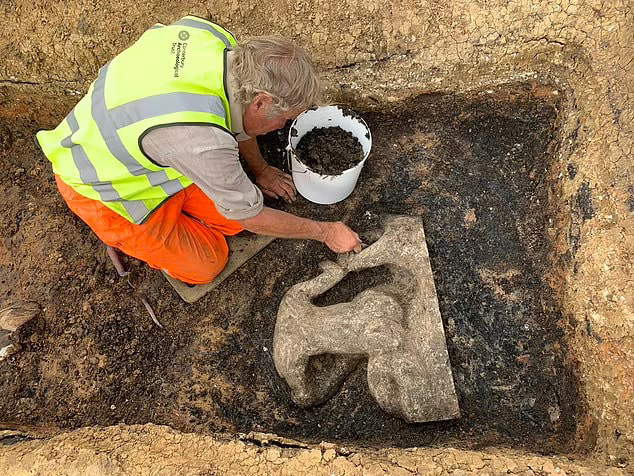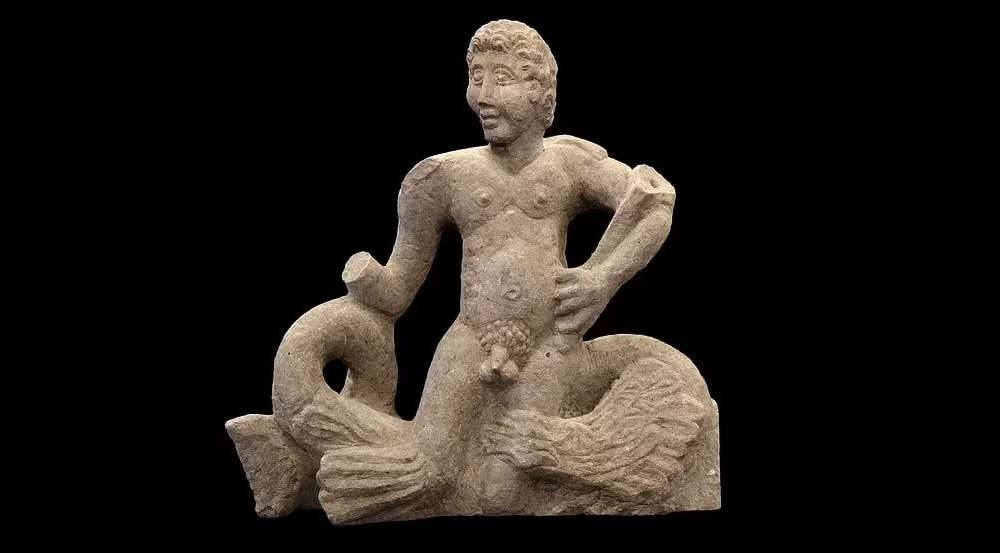A “spectacular” Triton statue is what Richard Hobbs, the senior curator of Roman Britain at the British Museum, enthusiastically called it, commenting on find made near a small village in Kent County, Teynham. in England. “Nothing like this has been discovered before,” the expert added.
And as is always the case, the find was made possible by excavations that were being carried out in preparation for the building of a new residential complex, until the statue depicting the maritime deity of Roman mythology turned up, preserved and intact in its 70 centimeters high and 70 wide, weighing around 60 kilograms. The area was then turned over to Canterbury Archaeological Trust (CAT) archaeologists who discovered additional artifacts, including a mausoleum. All of which dated back about 1,700 years.
“We were expecting an interesting Roman-era find, perhaps a cemetery, but the artifacts uncovered, including the stunning and unique statue of a Triton and the remains of the mausoleum far exceeded expectations,” commented Robert Masefield, director of the archaeological heritage services company RPS Group. “These finds,” he announced, “are now part of Teynham’s local heritage and the nations rich Roman history. Further study will place the findings in their full historical context.” Not least because the excavations uncovered a mausoleum located in a walled and moated enclosure along what was once the main road between London and the Roman ports of Richborough and Dover.

 Triton
TritonThe site was first discovered during a test excavation in 2017, when two perpendicular fragments of plaster wall foundations and two Roman cremation urn burials were found. It was quickly realized that there could be so much more, and so an archaeological study and excavation was planned to focus on this traffic circle along that road now modernly called the A2. Earlier this year, the archaeological consulting firm RPS proposed and developed excavation proposals for half a hectare and CAT was commissioned to undertake the archaeological investigation that began in late May 2023.
The Canterbury Archaeological Trust (CAT) was commissioned to lead the excavation, which revealed elements of a 30-square-meter walled enclosure surrounding an approximately 7-meter square structure. Further excavation revealed the structure to be a Roman mausoleum containing a Roman coin dated between about 320 and 330 AD. The site also included Roman, and possibly later, burials with various grave goods.
This days’ discovery is certainly the most important at the site: a single stone carved between the late 1st century and 2nd century AD, and so well preserved, depicting Triton with the torso of a man and the tail of a fish, riding a sea monster. In one of the missing limbs he may have held the famous shell, blowing into which he could calm waves and wind. There will be no shortage of other surprises.
 |
| England, rare and valuable Roman statue of the god Triton discovered |
Warning: the translation into English of the original Italian article was created using automatic tools. We undertake to review all articles, but we do not guarantee the total absence of inaccuracies in the translation due to the program. You can find the original by clicking on the ITA button. If you find any mistake,please contact us.